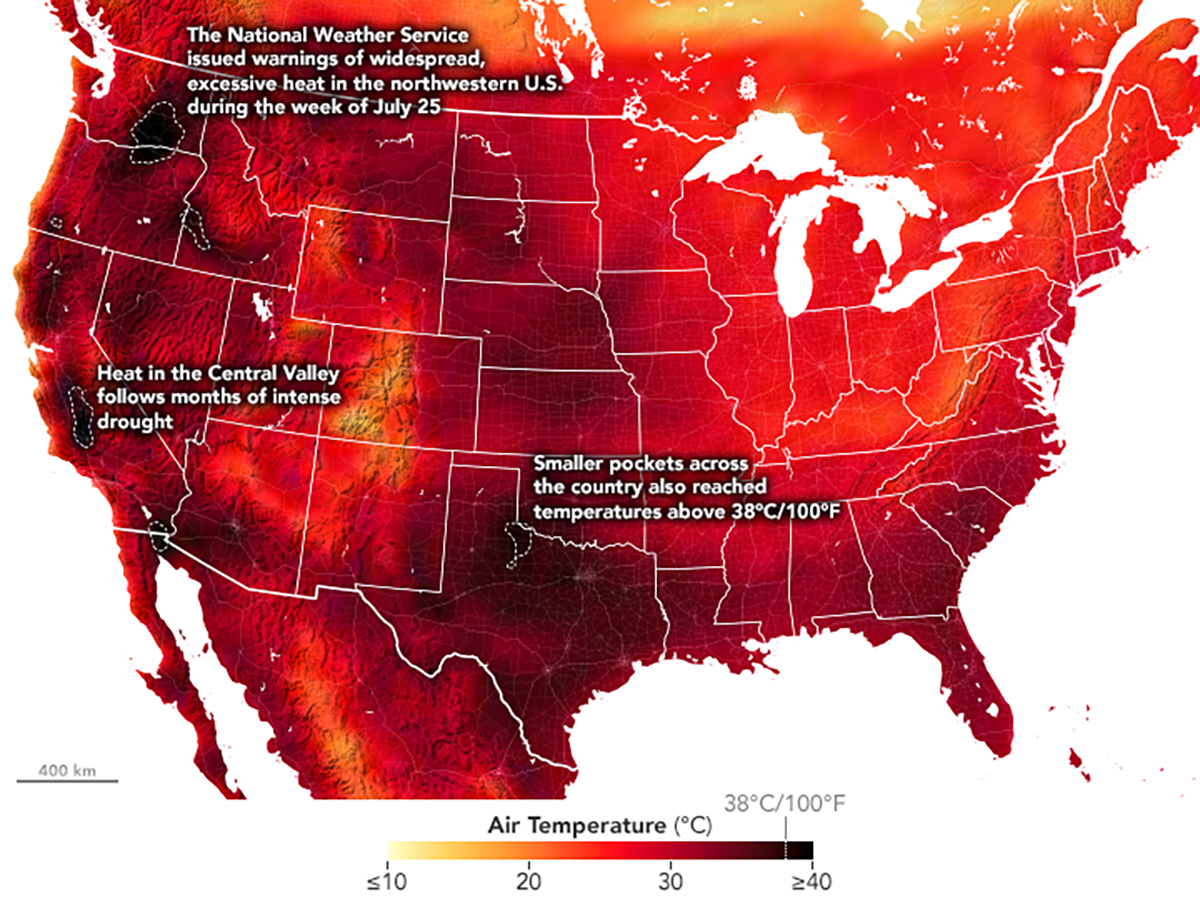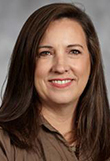
The effects of high overnight temperatures, especially on vulnerable populations, concern heat and climate experts Dr. Ashley Ward and Dr. Luke Parsons as much as the hot and muggy summer days.
“While extreme heat in the form of daily temperatures is very serious, what we’re increasingly seeing is a strong connection between poor health outcomes and persistently high overnight temperatures, particularly when those overnight temperatures remain at 75 degrees or above,” Ward said during a media conference Thursday on “Preparing for the Next Heat Wave” hosted by Duke University.
Supporter Spotlight

Ward, the senior policy associate at the newly rebranded Nicholas Institute for Energy, Environment and Sustainability, has focused on helping communities develop long-term sustainable solutions. Parsons, a research scientist and lecturer in the division of Earth and climate sciences in Duke’s Nicholas School of the Environment, studies the effect of climate and air pollution on human health and well-being.
Parsons said for him, heat exposure is a health-equity issue. He noted that he was sitting comfortably in his climate-controlled home but not everyone has that luxury. Many people who are the most vulnerable to heat exposure don’t have access to air conditioning. “The average middle- to upper-class person with more income in North Carolina has probably more air conditioning access than a lower income person.”
Ward explained that the high overnight temperatures mean those who don’t have air conditioning, can’t afford to run their air conditioner or live in housing that’s less energy-efficient are particularly vulnerable, especially if they have health conditions or take prescription medications that impede their body’s ability to process heat.
“When overnight temperatures remain high, what we’re seeing is the body doesn’t have a chance to recover from any heat exposure during the day, which starts to trigger a cascading set of events that results in heat-related illness, heat stroke, usually over a matter of days sometimes,” she said. This means in order to address the increasing risks from heat, “we need to think about structural changes not just are individuals doing their part. We need to create environments that mitigate that risk above and beyond what individuals can do and this is where community approaches are effective.”
The many who must work outside, such as agricultural and construction workers, are another group exposed to extreme humidity and heat – people who can’t go inside and cool down in the air conditioning, Parsons added.
Supporter Spotlight

Because these workers are unable to cool off, they’re losing hours of work because they have to slow their pace or take breaks. Parsons said between 50 and 100 hours, or roughly a week or two, of labor loss occurs each year with $20-$100 billion in labor productivity losses.
“As the globe warms, and heat waves get hotter and more frequent, it gets hotter and more humid outside for these workers, and it gets harder and harder for them to safely and efficiently conduct their work,” he said. “They’re really impacted during heat waves or just in general when it’s hot and humid during working hours during daylight.”
Heat exposure costs the public in emergency department visits, as well. Ward said that in the 2010s the National Institutes of Health conducted a study on emergency department visits for heat-related illness. Based on those estimates and the number of emergency department visits in the state during the heat, mainly by men aged 15 to 45, it costs residents around $20 million a year.
She added that through previous research with the National Oceanic and Atmospheric Administration, it was clear that people were going to the emergency department for heat-related illnesses even when temperatures were lower than when the National Weather Service issues heat advisories and warnings.
Ward’s hypothesis is that because when it gets 100 degrees, for example, people actually do take precautions. It’s at the slightly lower temperatures, below 96 or 97, when people are not quite as cautious and that leads to some of the worst health outcomes. “So there isn’t always an alignment with where the health risk lies and where the National Weather Service warnings are.”
She noted that in North Carolina, heat-related illness rates are much higher in rural areas than they are in urban areas for a variety of reasons, and she said that this pattern would probably be fairly consistent across a large swath of the Southeast.
Ward said all evidence points to increasing global temperatures, “and what we’re experiencing now is likely our new normal and, frankly, it probably will get worse. Given this, we need to adapt to this new reality by doing things like increasing tree canopy in urban spaces, making changes to our building codes that require energy efficient buildings for this new normal and the new normal that’s projected over the 30- to 50-year time frame.”
Ward said we also need to support policies that help people increase the energy efficiency in their homes, increase protections for occupational heat exposure, and train doctors, midwives and nurses about the increased risk from high heat for their pregnant patients.
But, both researchers said we shouldn’t give up on preventing heat waves and trying to find ways to adapt, but climate change-related extreme heat should be studied year-round.
Parsons said that if we try to limit global warming to about 2 degrees, relative to continuing with business as usual of our higher greenhouse gas emissions, around 300 million lost workdays per year in the U.S. alone could be prevented. That’s if we work worldwide to limit global warming.
“That being said, we need to adapt too, because in the meanwhile, until we bend that global warming curve to slow it down, we’re going to continue to see temperatures like we’ve seen are all around the globe this summer maybe won’t happen every year, but we’ll see these types of things with increasing frequency. We need to help protect communities that can’t protect themselves right now and encourage people to adapt to the warming that we’re living,” he said.







